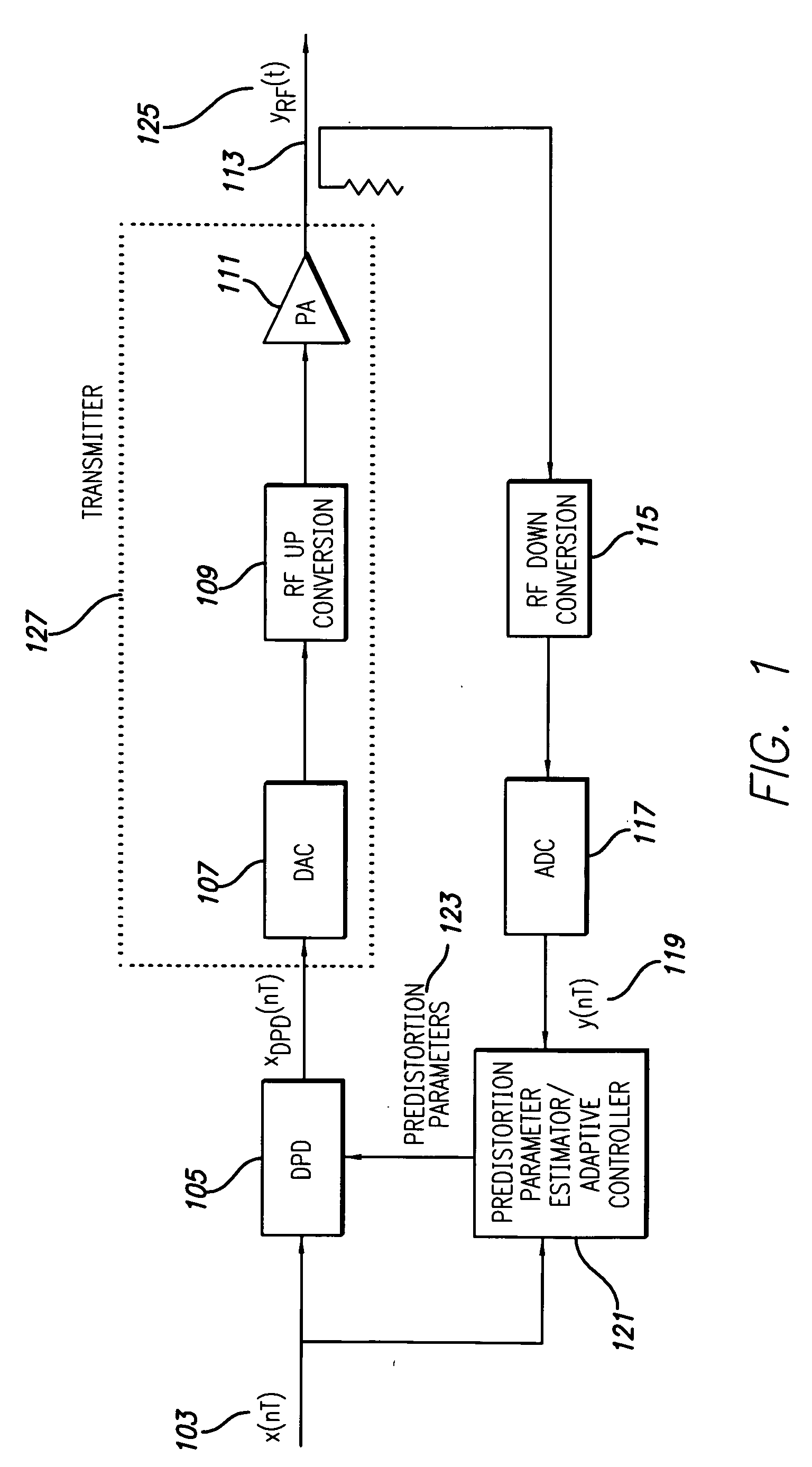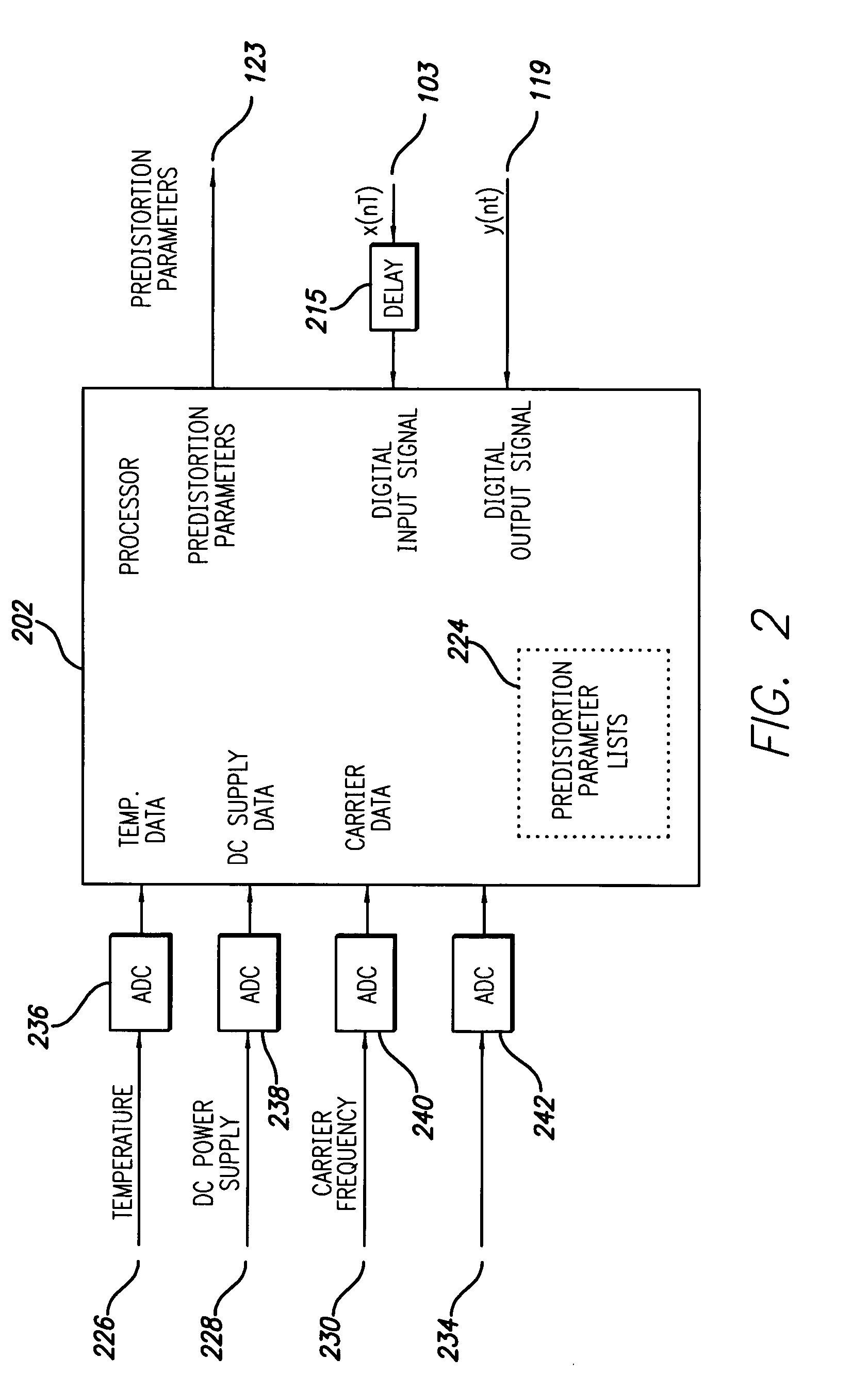Digital transmitter system employing self-generating predistortion parameter lists and adaptive controller
a digital transmitter and parameter list technology, applied in the field of digital transmitters, rf power amplifiers and amplification methods, can solve the problems of nonlinearity of all practical amplifiers, limited power delivery capacity of amplifiers, and nonlinearity of overall systems, and achieve the effect of reducing distortion
- Summary
- Abstract
- Description
- Claims
- Application Information
AI Technical Summary
Benefits of technology
Problems solved by technology
Method used
Image
Examples
Embodiment Construction
A block diagram of the RF transmitter system employing a power amplifier (PA) that is linearized using digital predistortion in accordance with a preferred embodiment of the present invention is shown in FIGS. 1 and 2. FIG. 1 illustrates the basic digital predistortion transmitter and FIG. 2 illustrates the control system.
As shown in FIG. 1, the digital predistortion linearized transmitter has a conventional architecture employing a transmit path and an observation (or feedback) path. The transmit path comprises a digital signal input 103, digital predistortion (DPD) module 105, digital to analog conversion (DAC) device 107, RF up conversion device 109, RF power amplifier 111, output coupler 113, and RF output signal 125. The observation path comprises the output coupler 113, RF down conversion device 115, analog-to-digital conversion (ADC) device 117, and a digital version of the sampled output signal 119. The digital input signal 103 and the digital output signal 119 are inputs t...
PUM
 Login to View More
Login to View More Abstract
Description
Claims
Application Information
 Login to View More
Login to View More - R&D
- Intellectual Property
- Life Sciences
- Materials
- Tech Scout
- Unparalleled Data Quality
- Higher Quality Content
- 60% Fewer Hallucinations
Browse by: Latest US Patents, China's latest patents, Technical Efficacy Thesaurus, Application Domain, Technology Topic, Popular Technical Reports.
© 2025 PatSnap. All rights reserved.Legal|Privacy policy|Modern Slavery Act Transparency Statement|Sitemap|About US| Contact US: help@patsnap.com



